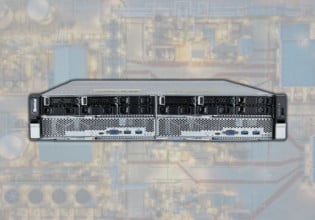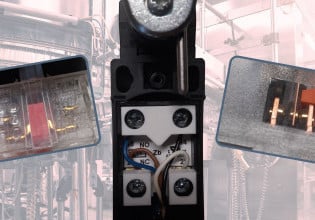Robotics and Automation Push Further Into Manufacturing
Industry leaders partner to bring innovation and push automation even further into the world of manufacturing, but how are they achieving this?
Collaborative environments in manufacturing are expanding. According to SME, “More than 2.4 million industrial robots are currently operating in global factories. Between 2020 and 2022, another almost 2 million new industrial robots will be installed.” Industrial robots and automation might not be right for everyone.
Some small to medium-sized companies may not have the volume or resources to gain an attractive ROI from advanced technologies.
FANUC robots demonstrating capabilities in a manufacturing facility. Image courtesy of FANUC.
However, robotics and automation companies are producing easier to program, faster to integrate, leasing options, and other opportunities to increase automation accessibility. The following will look at some trends in automation and robotics that are expanding this technology in manufacturing.
Connected Monitoring
Many companies have shifted from asking, “How do I benefit from automation?” to, “How do I get started with automation?” While some solutions have a high barrier to entry, there are more ways to automate than using robotics and actuators to reduce labor or increase production.
There are cost-effective automated monitoring devices that can positively affect production by getting the right data to the correct location. MachineMetrics found just through real-time connected monitoring, companies were able to improve efficiency by 20% without any additional actions or equipment.
Make sure you look for technologies that fit your infrastructure capabilities. Some companies use wireless sensors powered by batteries to get started quickly.
Quick and easy integration is important, but wireless sensors and batteries may not scale well.
There are examples of case studies where wireless monitoring worked reliably with more than 250 sensors. However, distance, bandwidth, and other factors will need to be considered when using wireless solutions.
Additionally, batteries can last for months or even years, but the time and cost associated with recharging or replacing should be added into any wireless solutions estimates.
Real-time monitoring devices can provide data that could offer enough insight on how to proceed with a digital transformation plan. In some cases, no additional automation was necessary to meet production goals.
Robotic Automation in Manufacturing
Sensors and monitoring devices are often just the first steps. Next, determine how to use data to drive operations and business goals. In the beginning, automation was expensive and often served a single purpose.
Today, robotics and automation equipment has become more flexible and can provide additional value with feedback and precise motor controls. To find cost-effective solutions, find affordable off the shelf equipment that is flexible to handle multiple tasks or be modified to fit different applications.
The demand for flexibility in automation has led many companies to move from proprietary to open-source hardware and software.
This doesn’t lock a company into being forced to use a specific technology or OEM. However, open-source doesn’t mean using different equipment and software will be as easy as putting together Legos.
Companies Partner to Promote Collaborative Automation Solutions
To promote more collaborative solutions, companies are forming their own platform solutions and partnering with other stakeholders. For example, in 2019, B&R merged its motion control with ABB’s robotics.
ABB robot. Image courtesy of ABB.
Collaborative and open-source solutions help OEMs design and build automation solutions or for end-users to adopt new technology.
Another example is Universal Robots (UR) partnering with end-effectors and camera systems companies to integrate this technology with their robotic arms.
Additionally, end-users can easily download apps and software from third-party providers such as Robotiq to program or operate the devices directly from the OEM’s controls and learning pendant. While collaborative environments are expanding automation, it is adding value in new areas.
A Universal Robot with an OnRobot end effector. Image courtesy of OnRobot.
With real-time monitoring and vision systems capable of verifying parts, companies can be more transparent. As manufacturing becomes increasingly global, supply chains become more complex and critical to success. Vision systems, real-time monitoring, and tracking orders can help companies make better business decisions, provide accurate timelines, and verify parts and orders.
For example, some parts can have extended lead times. Automation technology makes it possible to send images, tracking data, and quality assurance information on a shared cloud space in real-time. Rather than waiting days or weeks before receiving an order just to reject it, a company could verify the quality, timeline, and other factors before it ever leaves the OEM’s floor.
Collaborative environments in manufacturing are expanding even further into the financial markets. While some companies take out loans for equipment, DLL, an economical solution provider, and UR have launched a leasing program.
This partnership lowers the barrier to entry and expands accessibility to a new level for small to medium-sized companies.
Watching these partnerships and collaborations will be important in business to see who might capture more of the expanding automation and robotic market.
For manufacturers to stay on the cutting edge, it will be essential to see what technologies provide the most outstanding value for today, flexibility for tomorrow, and maybe even which provider has more partnership power for continued value possibilities in the future.









